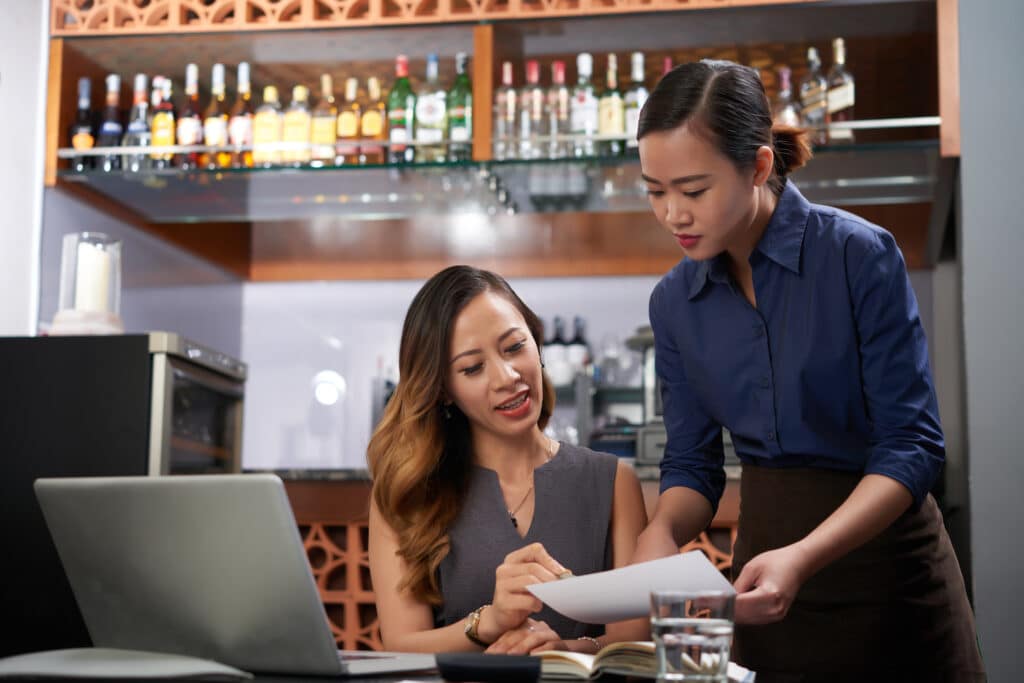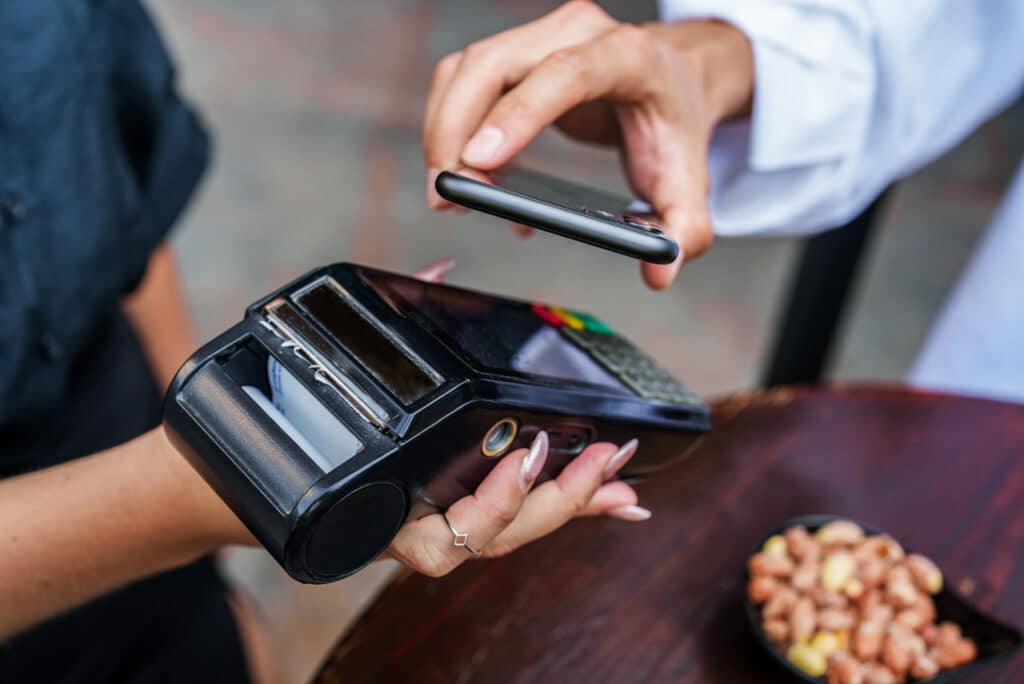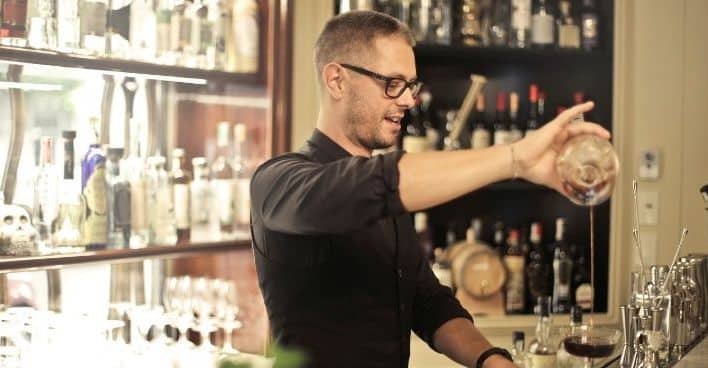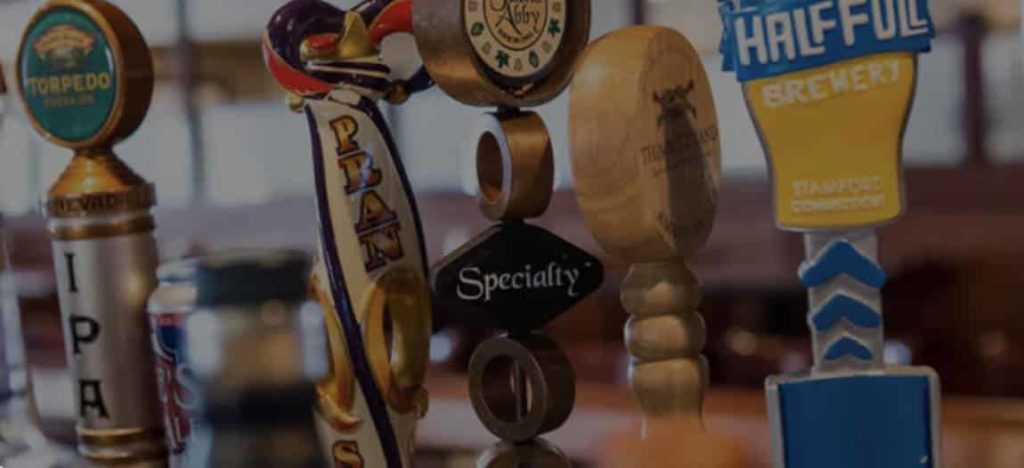This site uses cookies for analytics and to improve your experience. By clicking Accept, you consent to our use of cookies. Learn more in our privacy policy.
From crafting signature cocktails to managing the nightly rush, running a bar is often a thrilling yet challenging adventure. But while everyone wants their bar to be the hottest spot in town, competition can be fierce — there are nearly 70,000 bars nationwide.
It’s clear: Owners and operators need more than just good drinks to thrive. Beyond the basics of mixology, successful bars are those that know how to curate an enticing drinks menu, train loyal staff to connect with guests, and streamline tasks with the right technology. Focusing on efficiency behind the bar and charisma in front allows establishments to deliver peak performance during even the busiest hours.
Discover the essentials of running a bar in this guide, complete with practical strategies on how to elevate any establishment into a go-to-destination for unforgettable nights.
Imagine running out of your best-selling whiskey on a busy Friday night or discovering a hidden stash of spoiled craft beers. Such scenarios are nightmares for any bar owner, highlighting the importance of impeccable inventory management.
Use these tips to get started with top-notch bar inventory management:
Gone are the days of manually counting bottles and scribbling notes on a clipboard. Today’s technology offers sophisticated solutions that make inventory management a breeze, saving time and reducing waste.
That said, with so many apps and software available, choosing the right one can be overwhelming.
Take it one step further with a platform that integrates inventory management with accounting, operations, and payroll. With an all-in-one solution, operators have more time to focus on what matters most: creating a phenomenal drinking experience for guests.

One study found that alcoholic beverage businesses typically earn a gross profit margin of 48% — but this can increase to as high as 80% for bars. While this potential for high margins is enticing, setting the right prices for drinks is a delicate balancing act. Price too high and risk alienating guests; price too low, and bars might not cover all their costs.
Begin by calculating the pour cost, which is the cost of the ingredients in a drink. Aim for a pour cost between 20% and 25%, meaning if a drink costs $2 to make, it should be priced between $8 and $10 to generate a profit.
Next, consider the target market. A high-end cocktail bar can command higher prices, while a neighborhood pub might need to keep costs more affordable. Monitor competitors’ prices to ensure you’re in line with the local market, but don’t be afraid to charge a premium for unique or high-quality offerings — like those luxurious aged whiskey blends served in hand-cut crystal glasses.
Finally, use psychological pricing techniques. Prices ending in .95 or .99 can make items appear cheaper than they are. Also, consider tiered pricing, offering standard, premium, and deluxe versions of drinks to cater to different guest budgets and preferences.
One study found that alcoholic beverage businesses typically earn a gross profit margin of 48% — but this can increase to as high as 80% for bars. While this potential for high margins is enticing, setting the right prices for drinks is a delicate balancing act. Price too high and risk alienating guests; price too low, and bars might not cover all their costs.
Begin by calculating the pour cost, which is the cost of the ingredients in a drink. Aim for a pour cost between 20% and 25%, meaning if a drink costs $2 to make, it should be priced between $8 and $10 to generate a profit.
Next, consider the target market. A high-end cocktail bar can command higher prices, while a neighborhood pub might need to keep costs more affordable. Monitor competitors’ prices to ensure you’re in line with the local market, but don’t be afraid to charge a premium for unique or high-quality offerings — like those luxurious aged whiskey blends served in hand-cut crystal glasses.
Finally, use psychological pricing techniques. Prices ending in .95 or .99 can make items appear cheaper than they are. Also, consider tiered pricing, offering standard, premium, and deluxe versions of drinks to cater to different guest budgets and preferences.
No bar owner wants to find themselves drowning in unmanaged receipts or lost in financial guesswork. Good accounting practices are the bedrock of a successful bar, helping track performance, manage expenses, and make informed decisions confidently.
Keep these tips in mind:

Think of a point of sale (POS) system as the brain of any bar operation. A top-tier POS system does more than handle transactions. It also enhances the guest experience and provides the analytical insights needed to drive the business forward.
But like with inventory management tools, not all POS systems are created equal.
While a POS system is key to a bar’s success, integrating it with a comprehensive management solution can multiply its benefits. By combining restaurant accounting, operations, inventory, payroll, and scheduling into one cloud-based platform, the right restaurant software can maximize efficiency and profitability.

Bartenders and barbacks are more than just drink mixers and bussers; they’re also the face of the brand. With more than 330,000 bartenders and bar managers in the U.S., it’s not always easy to assemble a dream team that can transform good nights into great ones.
To attract and retain talent, keep these hiring and staffing strategies in mind:
A standout bartender not only mixes tasty cocktails; they also know how to turn first-time visitors into regulars and quiet evenings into buzzing nights. However, it can be tricky to find the perfect mix of personality, skill, and flair.
Start the search by looking for candidates with strong backgrounds in mixology and a deep knowledge of spirits, wines, and beers. During the interview process, assess their technical skills through a practical test where you ask them to make a few common cocktails. Pay close attention to their technique, speed, and presentation.
Keep in mind that while practical skills are essential, so is personality. Bartenders should be personable, attentive, and able to handle the high-paced environment of a busy bar. During the interview, gauge their service skills by role-playing scenarios they might encounter during a shift — think: a guest complaining about a weak drink, a patron celebrating their birthday, or a regular requesting an off-menu cocktail.

Behind every great bartender is a diligent barback who’s seamlessly restocking and prepping. That said, hiring the right barbacks is about more than muscle; it’s about finding a keen-eyed employee who can anticipate needs before they arise, ensuring that bartenders always have what they need to keep the drinks flowing.
Like hiring bartenders, you’ll want to look for candidates with a strong work ethic and attention to detail. A great barback is someone who’s eager to learn and can take direction well.
Physical stamina is also important, as barbacks often work long hours on their feet, carrying heavy supplies and cleaning up spills. Practical tests, such as restocking shelves or setting up the bar, can help assess their skills.
What separates a good bar from a legendary one? It often comes down to the person managing the operations. A great bar manager is a leader who can effortlessly navigate the long task list of daily duties: overseeing staff, managing inventory, making every guest feel seen, and more.
Unsurprisingly, finding the right person for this role requires a careful selection process. Look for candidates with extensive experience in the hospitality industry, preferably with a background in bar management. They should have strong leadership skills, excellent organizational abilities, and a thorough understanding of bar operations.
During the interview process, ask them how they’d handle real-world challenges. For example, how would they address a sudden staff shortage or resolve a conflict during rush hour? What strategies would they employ to boost bar sales on a slow night? Their answers will reveal their approach to problem-solving and stress management.
Even the most promising dream team can fall flat without the right foundation. Once you’ve assembled your bar staff, the real work begins.
To make the onboarding experience as dynamic as possible, use a mix of training methods, including hands-on practice, shadowing experienced staff, and formal instruction. Written materials, such as manuals and checklists, can also reinforce learning.
Remember: The training doesn’t stop once onboarding is complete. To consistently surpass guest expectations, continuous upskilling is essential. With the right restaurant software, you can build, customize, and deliver training courses, empowering your team to deliver exceptional service and take your bar to new heights.
Getting your bartenders up to speed isn’t just about teaching them how to mix drinks—it’s about creating a team that’s confident, capable, and ready to handle the fast-paced environment of a busy bar. Proper training and onboarding can reduce turnover, boost morale, and ensure your guests have a great experience every time they visit.

Bartender training is essential for creating a welcoming and safe bar environment. To set your bartenders up for success from day one, start with a solid training program that covers everything about your business and company culture. Beyond mastering drink recipes and knowing the menu inside out, bartenders need a variety of skills. They must manage their time well during busy shifts, use bar management software to keep things running smoothly, and deliver great customer service to ensure guests have a great experience.
Safety and legal knowledge are just as important. Bartenders need to know how to serve alcohol responsibly, recognize when someone has had too much, and understand the legal drinking age. They should also be familiar with safety protocols to prevent accidents and keep everyone safe. By including these elements in your training program, you’re not only preparing your team to provide excellent service but also making sure they follow legal and safety guidelines, which is vital for the success and reputation of your bar.
Barbacks play an important role in maintaining the flow of service by restocking supplies, keeping the bar area clean, and prepping garnishes. With great training, they can handle these tasks efficiently, allowing bartenders to focus on making drinks and chatting with guests without feeling overwhelmed.
Training also emphasizes the value of teamwork and communication. Barbacks need to work closely with bartenders and other staff, especially during busy times. They should be great at managing their time, keeping track of inventory, and following safety protocols to avoid accidents and keep the workspace clean. By investing in thorough barback training, you’re setting your team up for success and creating a well-organized and efficient environment that improves the overall guest experience.
What are the key factors that make a bar truly exceptional? A major aspect is having a well-trained bar manager. A competent bar manager ensures smooth operations by handling daily tasks, organizing staff schedules, and managing inventory effectively. Proper training equips them to fulfill these responsibilities, resulting in a well-stocked bar, an organized team, and satisfied customers. When bar managers are well-prepared, the entire team performs better, and customers enjoy an excellent experience.
Effective bar manager training encompasses various areas, such as creating efficient schedules, inventory management, and adherence to health and safety regulations. Leadership and communication skills are also vital. Managers need to motivate their team, resolve conflicts, and cultivate a positive work environment. Financial management is equally important, enabling managers to manage finances, control costs, and ensure the bar remains profitable. Comprehensive training ensures that bar managers can handle all aspects of the job, leading to a well-operated and welcoming bar that staff and customers alike appreciate.
Bartender certifications and licenses are essential for a thriving restaurant bar. Getting certified means bartenders are trained in everything from mixing perfect cocktails to navigating alcohol laws and delivering outstanding customer service. For restaurants, having certified bartenders on staff means great drinks and a professional touch that impresses guests. It’s a clear signal that the restaurant is committed to quality and sets it apart from the competition.
On the other hand, bartending licenses are a must-have for staying on the right side of local laws. These licenses ensure bartenders are up-to-date on regulations such as legal drinking ages and how to handle intoxicated customers. It’s about creating a safe, compliant environment that avoids legal hiccups and keeps things running smoothly. Investing in these credentials not only enhances service and compliance but also builds the restaurant’s reputation as a trustworthy and professional spot for enjoying great drinks.
A bartending license certification is more than just a piece of paper—it’s a must-have for running a responsible and successful bar. Getting certified usually means completing a course or passing a test that covers everything from local alcohol laws to safe serving practices. This training ensures bartenders know the rules, like the legal drinking age and how to handle customers who’ve had too much. It’s all about keeping things legal and creating a safe, enjoyable environment for everyone.
Having certified bartenders really makes a difference for bars and restaurants. It shows that you’re committed to high standards and legal compliance, which boosts your reputation and attracts more customers. Certified bartenders handle all sorts of situations with professionalism and care, making sure every guest has a great experience. In the end, investing in bartending certification helps you avoid legal issues and enhances the overall quality and reputation of your bar or restaurant.
ServSafe Alcohol Certification is important for anyone serving alcohol, whether you’re a bartender or a server. This certification covers everything you need to know, from checking IDs and understanding how alcohol affects people to handling tricky situations and preventing over-serving customers. It’s all about making sure that every drink is served responsibly and that everyone has a safe and enjoyable time.
Why is this certification so important for bars and restaurants? Having certified staff is a significant advantage. It shows your commitment to responsible alcohol service and helps you steer clear of legal issues. Certified employees are better prepared to handle various situations, ensuring smooth operations and keeping your customers satisfied. This type of certification not only enhances service but also strengthens your reputation as a professional and reliable place to grab a drink or two.
Ever wondered what makes a bar or restaurant feel so safe and enjoyable? A big part of it is having staff with Responsible Beverage Service (RBS) Certification. This training is essential for everyone involved in serving alcohol, from bartenders to managers. It covers practical skills like checking IDs, recognizing when someone’s had too much, and handling difficult situations. With RBS Certification, your team is better equipped to ensure everyone enjoys their time responsibly.
So why is RBS Certification so important? For bars and restaurants, it’s a smart move. It helps you stay compliant with local laws, avoiding fines and legal issues. But it’s not just about following rules—it’s about creating a welcoming environment where guests can relax without worries. Certified staff handle challenging situations with confidence, making your place more appealing and trustworthy. Investing in RBS Certification shows you care about your guests’ safety and experience, which can make your venue the preferred choice for a night out.
Thinking about opening a bar? It’s definitely an exciting venture, but it’s more than just mixing drinks and setting up a cool space. It also means handling day-to-day operations, building a great team, and keeping up with marketing and finances. Success in this competitive industry requires solid planning and a thoughtful strategy.
Opening a brewery or microbrewery requires more than just a knack for brewing up a tasty beer. It’s about blending your love for craft brewing with a solid business approach and strategic planning. To turn this vision into a thriving business, you’ll need to dive into market research, craft a business plan, invest in the right technology, and design a welcoming taproom.

When setting out to open a sports bar, the goal is more than just tuning in to the latest games. It’s about creating a space where guests can come together, enjoy great food and drinks, and revel in the excitement of the game. A successful sports bar needs to strike a balance between a fun atmosphere and smooth operations. Here are a few pointers to help turn that vision into reality, covering the key elements needed to create a well-managed sports bar.

Thinking about opening a wine bar? It’s a fantastic idea for those passionate about wine and want to create a place where people can enjoy a great glass in a relaxed setting. But before anyone starts pouring, there’s a bit more to it than just picking out just any old bottle. Here’s a rundown of what a potential owner would need to make their place a hit.

Blog Menu
See why more than 40,000 restaurants use Restaurant365
Read More:
See why more than 40,000 restaurants use Restaurant365
Running a successful bar requires more than just serving great drinks; it demands meticulous attention to management, staff training, and guest experience. From inventory control and menu design to pricing strategies and point-of-sale systems, every detail plays a crucial role in the overall success of the establishment.
Investing in the right technology and training programs ensures efficiency and enhances guest satisfaction, while a well-curated atmosphere and dynamic marketing efforts help build a loyal customer base. By integrating these elements, bar owners can transform their venues into thriving hotspots that offer unforgettable experiences, setting themselves apart in the competitive bar industry.
Share this blog:
Restaurant365 brings together accounting, operations, scheduling, and more in a flexible platform—empowering restaurants to choose the solutions they need and scale with confidence.